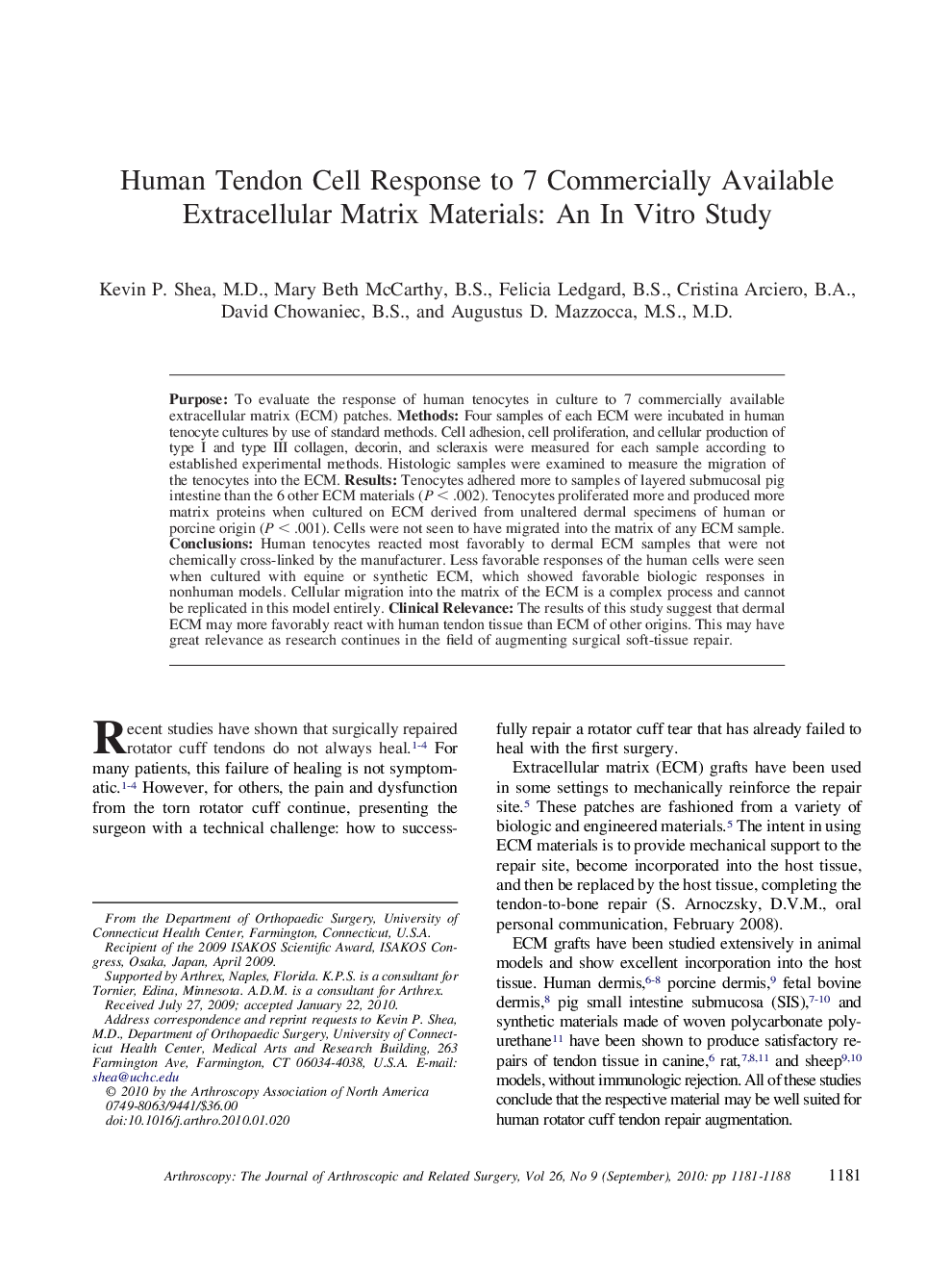| Article ID | Journal | Published Year | Pages | File Type |
|---|---|---|---|---|
| 4045242 | Arthroscopy: The Journal of Arthroscopic & Related Surgery | 2010 | 8 Pages |
PurposeTo evaluate the response of human tenocytes in culture to 7 commercially available extracellular matrix (ECM) patches.MethodsFour samples of each ECM were incubated in human tenocyte cultures by use of standard methods. Cell adhesion, cell proliferation, and cellular production of type I and type III collagen, decorin, and scleraxis were measured for each sample according to established experimental methods. Histologic samples were examined to measure the migration of the tenocytes into the ECM.ResultsTenocytes adhered more to samples of layered submucosal pig intestine than the 6 other ECM materials (P < .002). Tenocytes proliferated more and produced more matrix proteins when cultured on ECM derived from unaltered dermal specimens of human or porcine origin (P < .001). Cells were not seen to have migrated into the matrix of any ECM sample.ConclusionsHuman tenocytes reacted most favorably to dermal ECM samples that were not chemically cross-linked by the manufacturer. Less favorable responses of the human cells were seen when cultured with equine or synthetic ECM, which showed favorable biologic responses in nonhuman models. Cellular migration into the matrix of the ECM is a complex process and cannot be replicated in this model entirely.Clinical RelevanceThe results of this study suggest that dermal ECM may more favorably react with human tendon tissue than ECM of other origins. This may have great relevance as research continues in the field of augmenting surgical soft-tissue repair.
